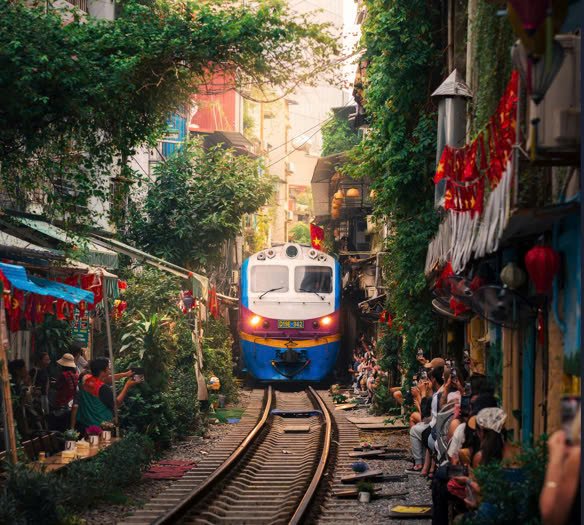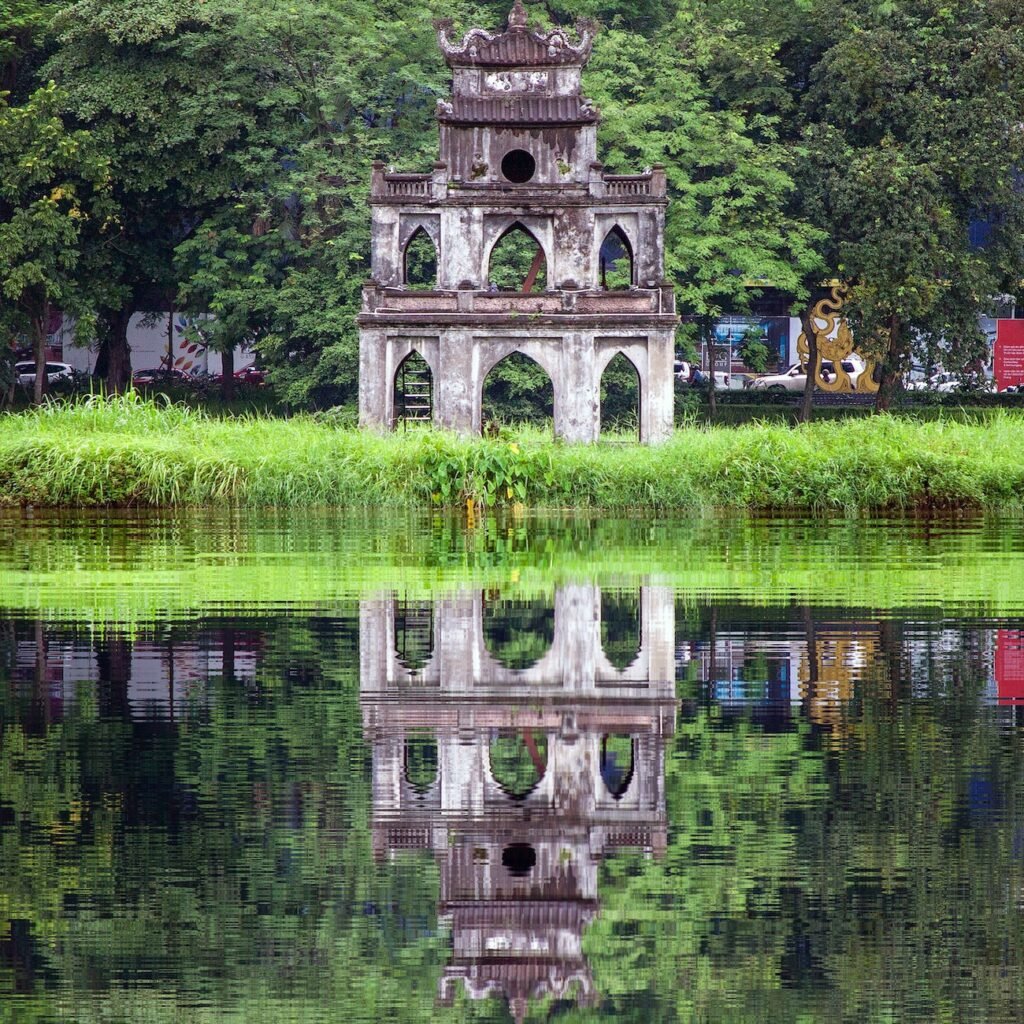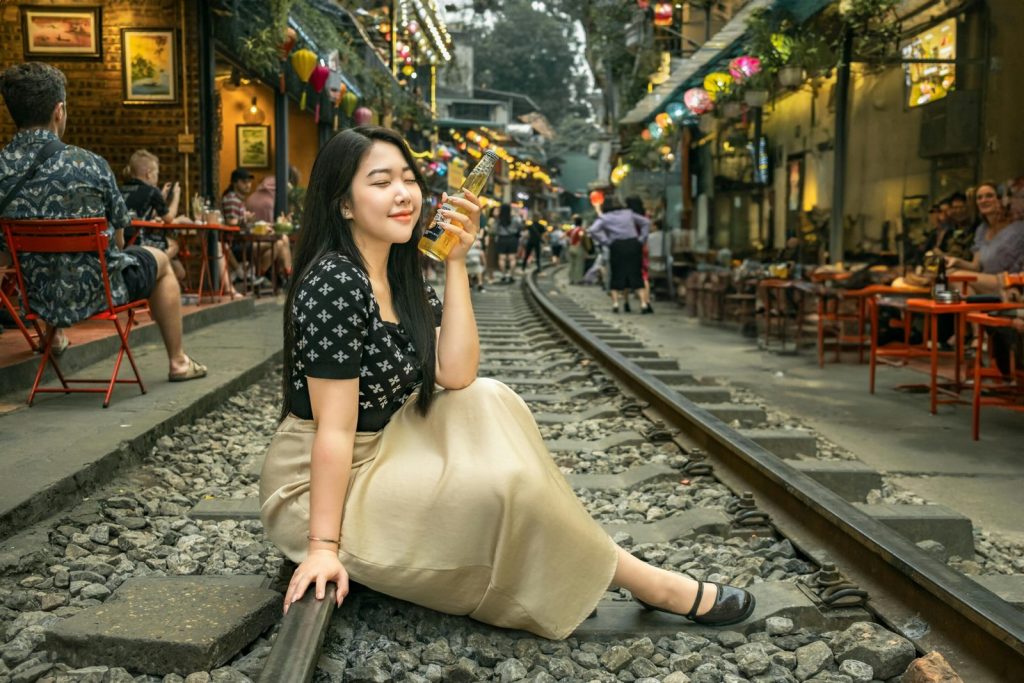Top Tourist Attractions in Hanoi Vietnam

Hanoi is a city of contrasts—where ancient traditions coexist with modern life
Hanoi, the vibrant capital of Vietnam, is a city that perfectly blends the old and the new. With its rich history, centuries-old architecture, and lively culture, Hanoi offers a unique experience for travelers. From ancient temples and tranquil lakes to bustling markets and colonial-era buildings, there’s something for every kind of traveler in Hanoi. In this article, we’ll explore some of the must-see tourist sites in this fascinating city.
Hoan Kiem Lake (Lake of the Returned Sword)
Hoan Kiem Lake is the heart of Hanoi and one of the most iconic landmarks in the city. The lake is surrounded by beautiful trees and colonial-era architecture, making it a peaceful retreat from the hustle and bustle of the city. At the center of the lake, you’ll find Ngoc Son Temple, which is accessible by a charming red bridge called The Huc Bridge. The lake is also a popular spot for locals who come here to exercise, practice Tai Chi, or simply relax by the water.
The Old Quarter
The Old Quarter of Hanoi is a maze of narrow streets, each named after the goods traditionally sold there (such as Hang Bac for silver or Hang Gai for silk). This area is a must-visit for anyone wanting to experience the hustle and bustle of Hanoi’s daily life. You’ll find a mix of local shops, street food vendors, and historical buildings. Be sure to try some of Hanoi’s famous street food, such as Pho (Vietnamese noodle soup), Banh mi (Vietnamese sandwich), and Egg coffee.
The Temple of Literature
The Temple of Literature (Van Mieu) is one of Hanoi’s oldest and most revered landmarks. Established in 1070, it was originally built as a Confucian temple and later became Vietnam’s first national university. The temple complex is a peaceful place with beautiful courtyards, serene ponds, and traditional architecture. It’s a great place to learn about Vietnam’s scholarly heritage and enjoy a tranquil atmosphere.
Ho Chi Minh Mausoleum
The Ho Chi Minh Mausoleum is one of Hanoi’s most important historical sites. It is the final resting place of Ho Chi Minh, the founder of modern Vietnam. The mausoleum is located in Ba Dinh Square, where Ho Chi Minh declared Vietnam’s independence in 1945. The site is a place of reverence, and visitors can pay their respects to one of Vietnam’s most influential leaders. The mausoleum is open to the public during the morning hours, and the changing of the guard’s ceremony is a popular event.

One Pillar Pagoda
The One Pillar Pagoda is a unique and iconic structure in Hanoi, built in 1049 by Emperor Ly Thai Tong. The pagoda is designed to resemble a lotus flower, symbolizing purity in Vietnamese culture. It sits on a single pillar in the middle of a small pond, making it one of the most photographed sites in Hanoi. This pagoda is not only a beautiful architectural marvel but also holds deep cultural and religious significance.
Hanoi Opera House
The Hanoi Opera House is a stunning example of French colonial architecture, inspired by the Paris Opera House. Built in 1911, it was a symbol of French influence in Vietnam during the colonial period. Today, the Opera House is a venue for performances ranging from classical music and ballet to modern plays and concerts. Even if you’re not attending a performance, the exterior of the building is worth admiring, and the surrounding area is a great place for a leisurely stroll.
Vietnam Museum of Ethnology
The Vietnam Museum of Ethnology is an excellent place to learn about the diverse ethnic groups that make up Vietnam’s population. The museum features exhibits on traditional costumes, tools, and artwork from the country’s various ethnic communities. There are also outdoor displays, including reconstructed traditional homes from different regions of Vietnam. This museum offers deep insights into the rich cultural tapestry of the country.
Thang Long Imperial Citadel
The Thang Long Imperial Citadel is a UNESCO World Heritage Site located in the heart of Hanoi. This ancient royal complex was the political center of the country for over 1,000 years, serving as the home of Vietnam’s kings. Visitors can explore the impressive ruins, including the D67 Building, where the Vietnamese government operated during the war with the United States. The site also offers fascinating archaeological artifacts and exhibitions related to Vietnam’s history.
Hanoi Train Street
Hanoi’s Train Street is one of the city’s most unique and quirky attractions. The street runs through a narrow alley where a train passes by just inches away from people’s homes and cafes. It’s an incredible sight to see, as the train’s loud whistle signals its approach, and locals quickly move their tables and chairs to make way for the train. It’s a thrilling experience for visitors who want to witness the intersection of daily life and this unusual form of transportation.
West Lake (Ho Tay)
West Lake is the largest lake in Hanoi, offering a peaceful escape from the busy city center. It’s a popular spot for cycling, walking, or enjoying a drink at one of the many lakeside cafes. The lake is surrounded by several historical sites, including Tran Quoc Pagoda, the oldest Buddhist temple in Hanoi, and Quan Thanh Temple, dedicated to the Taoist god of the north. West Lake is also home to luxury hotels and restaurants, making it a great place to relax and enjoy the scenic beauty of Hanoi.
Vietnam Military History Museum

Located near the Old Quarter, the Vietnam Military History Museum is dedicated to the history of Vietnam’s military struggles. The museum offers a fascinating collection of artifacts, including weapons, uniforms, and military vehicles from various periods, including the French colonial era, the American War, and the fight for independence. A highlight of the museum is the MiG-21 jet fighter on display, which was used during the Vietnam War.
Hanoi is a city of contrasts—where ancient traditions coexist with modern life.
The mix of historic temples, colonial architecture, and vibrant street life makes it a fascinating destination for tourists. Whether you’re interested in history, culture, food, or just soaking up the atmosphere, Hanoi offers something for everyone.
For a seamless travel experience and expert guidance on exploring Hanoi and other destinations in Asia, consider contacting *Traveling to Asia*. Their team offers personalized travel services to help you make the most of your trip.
Contact Information:
Traveling to Asia
Email: sales@travelingtoasia.com
Traveling to Asia is a Destination Management Company (DMC) that operates not only in Vietnam but also in Thailand, Laos, Sri Lanka, and Cambodia. With that in mind, I will revise the article to reflect your company’s services across these countries and emphasize your expertise in providing tailored travel solutions.





